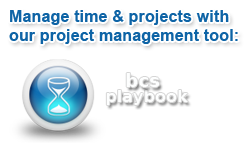Assets are items within an organization where information is created, processed, stored, transmitted, or discarded. Mapping and managing assets are essential to prioritize investments and concentrate efforts on most critical assets that sustain organizational processes. BCS’s system automates the asset management process by providing asset inventory (both technology and non-technology oriented assets such as people, processes and facilities), and maintaining it in a centralized repository. It enables the gathering and storing of evidence, manages compliance with standards and improves each organization’s external audit posture. Each asset has attributes that allow the organization to identify and prioritize investments, and concentrate efforts on the most critical assets that sustain organizational processes.
One of the biggest challenges in asset management is identifying which business processes support a particular asset, and in the event that the asset is compromised, which business processes may be impacted. Few organizations actually map all of this information. Some organizations ensure that they map the link between applications and technology assets or even a list of applications that support a particular business process.The BCS approach is to first map all assets to the intermediate system layer, and then map these systems to each associated business process. The resulting map is ensures all of these connections and dependencies are linked correctly, providing the first step toward an effective Governance Risk and Compliance (GRC) initiative.
How BCS helps your organization manage assets:
- Inventory of technological (software and hardware) and non-technological (people, environment and processes) assets
- Determination of each asset’s criticality related to the business processes it supports
- Centralized repository for all organizational assets (software, hardware, environment, people and process)
- Customizes inventory attributes according to the organization’s needs and structure
- Integrates seamlessly with Risk Analysis, Compliance and Business Continuity initiatives
- Supports the creation of business continuity plans, facilitating maintenance and rapid recovery of information and procedures
- Provides controls maintenance


